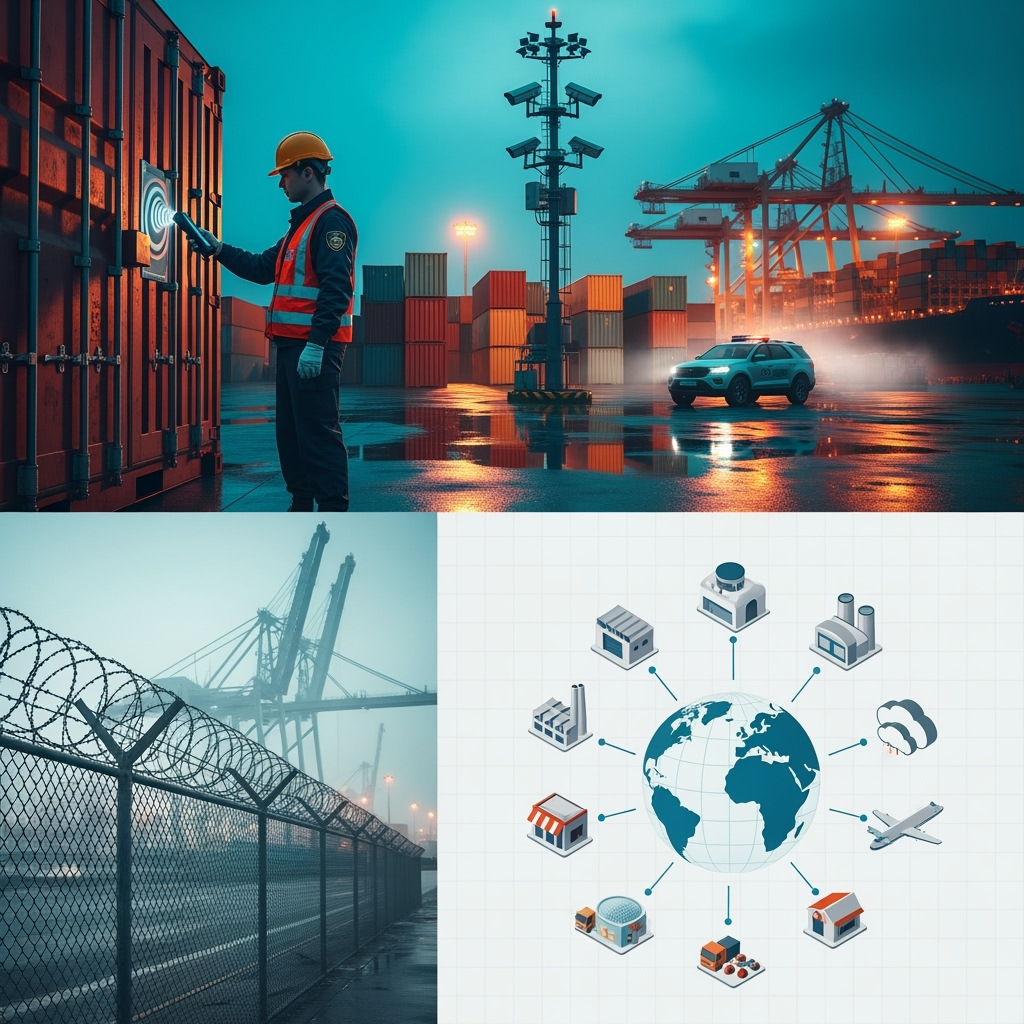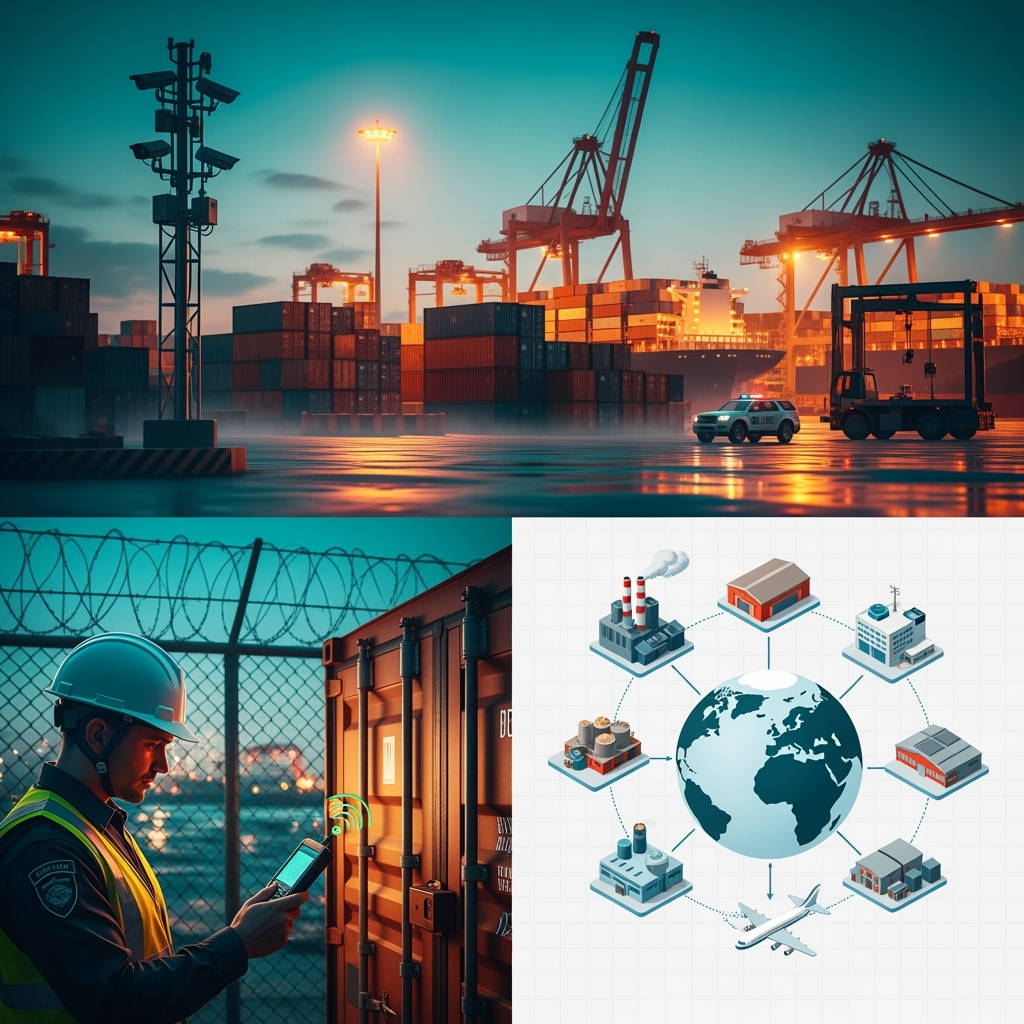The challenges of securing supply chains
A plain‑English guide for the Ksqaured Blog
If you’ve ever tracked a parcel and watched it hop between cities, you’ve seen the modern miracle of supply chains. But that neat map hides a messier truth: your stuff depends on a web of farms, factories, warehouses, ships, trucks, software systems, and people—often spread across dozens of companies and countries. A chain is only as strong as its weakest link, and today’s supply chains have a lot of links.
Securing them isn’t just about locks and passwords. It’s about keeping materials safe, data trustworthy, deliveries on time, and the business resilient when life happens—because it will.
Below is a no-jargon tour of why securing supply chains is so hard, what “secure” really means, and the practical moves that make a difference.
Why supply chains are so hard to secure
- Complexity and opacity
- Even mid‑size companies rely on hundreds of suppliers; those suppliers have their own suppliers (“fourth parties” you’ve never met). When you can’t see the full map, you can’t see the risks.
- Global shocks, local pain
- A flood in one region, a port strike in another, new export rules—small changes far away ripple into factory stoppages and empty shelves close to home.
- Just‑in‑time brittleness
- “Lean” inventory saves money—until a single part runs short. Then your whole line stalls. Many firms are shifting to “just‑in‑case” for critical components.
- Cyber meets physical
- Logistics runs on software. A ransomware hit on a shipping line can delay containers just as surely as a storm at sea.
- Human factors
- Fatigue, fraud, or simple mistakes can lead to mislabelled items, misrouted trucks, or counterfeit parts slipping through.
- Compliance sprawl
- Different regions and industries demand different certifications, customs checks, and documentation. Missing a detail can hold a shipment hostage.

The top challenges, in everyday terms
- Limited visibility
- You can’t protect what you can’t see. Many firms don’t know where their tier‑2 or tier‑3 suppliers are, or how they operate.
- Third‑party sprawl
- Every outside vendor (and their vendors) is a potential doorway for problems—data leaks, quality failures, late deliveries.
- Data silos and paper trails
- Spreadsheets and PDFs slow everything down and hide issues. When data isn’t shared, warnings arrive late.
- Counterfeits and tampering
- High‑value goods—electronics, pharmaceuticals, automotive parts—are targets. Look‑alikes can be dangerous and ruin trust.
- Single points of failure
- One factory, one port, one rare material, one software provider. When that “one” hiccups, everything does.
- Climate and geography
- Wildfires, heat waves, floods, and low water in canals—routes that used to be reliable aren’t always anymore.
- Blended attacks
- Criminals mix cyber and physical tactics: hack a system to print fake labels, then swap pallets; or phish a vendor to change bank details and divert payments.
What “secure” really means in a supply chain
Think of four pillars:
- Visibility: Know what’s where, who’s involved, and how things move.
- Verification: Trust, but verify—quality checks, certifications, and tamper‑evident packaging.
- Resilience: Plan for detours—alternate suppliers, routes, and safety stock for critical items.
- Collaboration: Security is a team sport—share data, set standards, and practice together.
A practical playbook you can start now
- Map your chain, starting with what matters most
- List your top products, the critical parts they depend on, where they come from, and any single‑source risks. Even a rough map beats a blind spot.
- Set a baseline for your vendors
- Create a simple, standard checklist: quality controls, incident response contact, cybersecurity basics (multi‑factor authentication, regular patching), and physical security (access controls, CCTV where appropriate).
- Verify, don’t just collect certificates
- Spot‑check batches, audit high‑risk suppliers, and use tamper‑evident seals or track‑and‑trace tech for sensitive goods.
- Reduce single points of failure
- Dual‑source critical components, qualify alternates, and keep “just‑in‑case” stock for items with long lead times.
- Segment to fail gracefully
- In IT, separate operational technology (OT) networks from office IT. In logistics, avoid routing everything through a single hub.
- Use smart tracking—lightly
- Barcodes and lot codes are a low‑cost win. For high‑value or temperature‑sensitive goods, layer on sensors or GPS for specific legs of the journey.
- Tighten the digital front door
- Require MFA for access to logistics portals, enforce strong passwords, and limit access to “need‑to‑know.” Backups should be offline and tested.
- Tabletop the “bad day”
- Run short drills: “A key supplier goes offline,” “A shipment is delayed at customs,” “A ransomware alert pops up.” Who calls whom? What’s the workaround? Practice makes panic less likely.
- Write it into contracts
- Include security expectations, SLAs for incident reporting, and rights to audit for high‑risk categories.
- Train for the real world
- Teach teams to spot phishing, verify wire transfers, and follow chain‑of‑custody steps. Simple checklists prevent expensive mistakes.
Standards to borrow from (even if you don’t certify):
- ISO 28000 for supply chain security management.
- NIST Cybersecurity Framework for Implementing Sound Cyber Hygiene.
- Industry‑specific guides (e.g., pharma good distribution practices) when applicable.
Quick wins vs. long bets
- Quick wins
- Identify and address your top five single‑source dependencies.
- Turn supplier onboarding into a standard checklist.
- Enable MFA on all vendor and logistics portals.
- Add tamper‑evident packaging to high‑value shipments.
- Create a one‑page incident call tree and run a 45‑minute tabletop.
- Long bets
- Build or buy a supplier risk dashboard for ongoing monitoring.
- Develop alternate suppliers and near‑shore options for critical parts.
- Standardise data formats with key partners to reduce manual handoffs.
- Invest in selective track‑and‑trace and quality automation.
Metrics that actually help
- Time to detect and time to respond to a supplier incident.
- Percentage of critical components with dual sourcing.
- On‑time, in‑full (OTIF) rate across top suppliers.
- Percentage of vendors meeting your security baseline.
- Number of shipments with verified chain‑of‑custody for high‑risk items.
Red flags:
- Surprise stockouts of a single part.
- Frequent data mismatches between systems.
- Repeated last‑minute expediting to “save” orders.
- Unverified changes to payment details or shipping addresses.
The bottom line
Securing a supply chain isn’t about chasing perfection; it’s about reducing surprises and bouncing back faster when they happen. Start with visibility, tighten the biggest weak spots, and practice your response. Do that consistently, and your chain gets stronger—link by link.


Leave a Reply